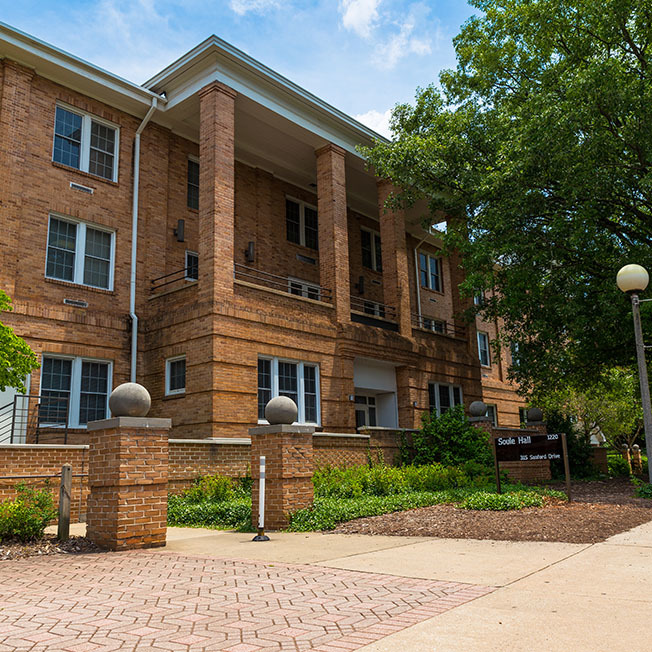Soule Hall

A screenshot of Alice W. Stancil's interview with WSB-TV about her experiences as UGA's first woman admitted.
1918 was a groundbreaking year for the University of Georgia as women finally received admission to the university for the first time, with Alice W. Stancil (woman to the left) being the first to be admitted academically. In 1920, a new dormitory was constructed and became the first building to house females only. Unofficially, the building gained the title of the “Women’s Building” for apparent reasons and initially only held a max capacity of 20 women. When originally built with the style of natural Southern charm, the “Women’s Building” contained a gymnasium, classrooms, a balcony overlooking the amphitheater (now known as Boyd Research & Science Library) and even a pool in the basement (Arch 93). A few years later in 1923, this dormitory was formally named Soule Hall after the President of the Agriculture & Mechanical Arts College, Andrew M. Soule. He worked hard to lay the groundwork for the Cooperative Extension Services as well as for UGA’s own Public Service program (Arch 93).
Today, Soule Hall holds the reputation of being the oldest residence hall still being used for its original purpose of housing non-freshmen women. But due to the multiple times in which it was closed down and reopened, all for different reasons, Soule Hall’s history was rather eventful before becoming what we see today. During World War II, the dormitory was shut down by the university in order to serve as barracks for navy cadets. Then in 1972, protests erupted as the former residence hall had been leased as classroom and office space for the State Offender Rehabilitation Center (Arch 93). This lasted until 1987, when the hall was once again closed but this time was respectively because of concerns for structural safety. The following year Soule Hall underwent major modernizing renovations in order to return to its original purpose of housing the university’s female students. It is now apart of the Myers Community in arrangement with Myers Hall, Rutherford Hall and Mary Lyndon Hall to surround the Myers Quad.
Works Cited
Dendy, Larry B. Through the Arch: an Illustrated Guide to the University of Georgia Campus. The University of Georgia Press, 2013, pg.93.
Moore, Ray. “WSB-TV Reporter Interviewing Alice W. Stancil.” Jan. 1961. Galileo, crdl.usg.edu/do:ugabma_wsbn_69562. Accessed Nov. 2019.
